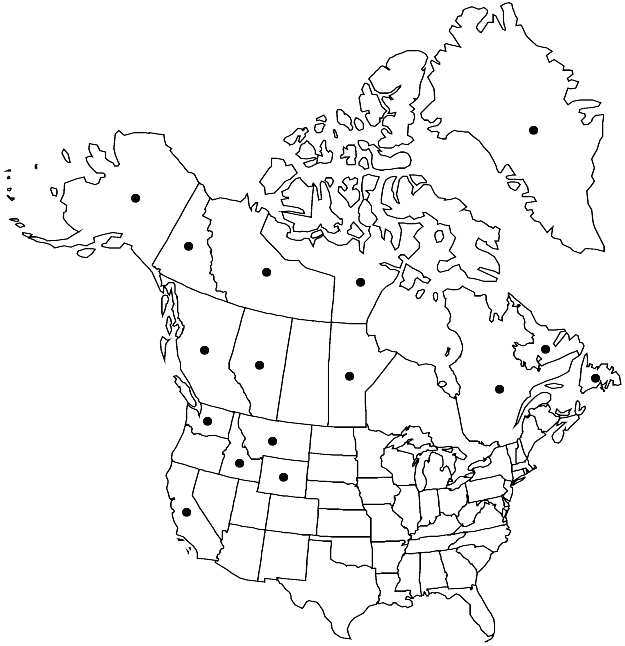Difference between revisions of "Orthotrichum pylaisii"
Bryol. Univ. 1: 722. 1826.
imported>Volume Importer |
imported>Volume Importer |
||
| Line 104: | Line 104: | ||
|publication year=1826 | |publication year=1826 | ||
|special status= | |special status= | ||
| − | |source xml=https:// | + | |source xml=https://bitbucket.org/aafc-mbb/fna-data-curation/src/2e0870ddd59836b60bcf96646a41e87ea5a5943a/coarse_grained_fna_xml/V28/V28_93.xml |
|genus=Orthotrichum | |genus=Orthotrichum | ||
|species=Orthotrichum pylaisii | |species=Orthotrichum pylaisii | ||
Latest revision as of 21:39, 5 November 2020
Plants to 3 cm, light green to olive green. Stem leaves stiff, erect-appressed when dry, ovate-lanceolate to lanceolate, 2–3 mm; margins revolute, entire; apex broadly acute to narrowly obtuse, often bluntly acuminate; basal laminal cells rectangular-elongate, walls thick, ± nodose; distal cells 9–16 µm, 1-stratose, papillae 1–4 per cell, 2-fid, small. Specialized asexual reproduction absent. Sexual condition gonioautoicous. Seta 2–3 mm. Capsule emergent or exserted, oblong to cylindric, 1.2–2.5 mm, slightly 8-ribbed distally; exothecial cells differentiated to mid capsule; stomata superficial; peristome double or single; prostome occasionally present, small; exostome teeth 16, sometimes connate in 8 pairs, reflexed-recurved, densely papillose, not fenestrate, not cancellate; endostome segments often absent, occasionally rudimentary, or 8, well developed, usually present in at least some capsules, narrow, of 1 row of cells, smooth or finely papillose. Calyptra oblong to oblong-conic, smooth, sparsely hairy, hairs smooth. Spores 16–27 µm.
Habitat: Rock near oceans or alpine or arctic zones, on Salix or Alnus, bone, in or near bird rookeries, granitic boulders in coniferous forests
Elevation: low to high elevations (100- 3000 m)
Distribution

Greenland, Alta., B.C., Man., Nfld. and Labr., N.W.T., Nunavut, Que., Yukon, Alaska, Calif., Idaho, Mont., Wash., Wyo., n Europe, n Asia.
Discussion
Orthotrichum pylaisii is distinguished by the ribbed capsules with reflexed exostome teeth and a rudimentary endostome, along with superficial stomata and large, ovate-lanceolate leaves. The capsule is usually exserted in North American populations; however, in European populations it is sometimes only emergent.
Selected References
None.